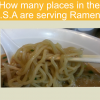Hojicha Japanese Green Tea

With over three thousand varieties of tea currently available throughout the world, it's little wonder that in 2016 over 80 tonnes of it were produced to satisfy those avid drinkers of the thirst quenching substance. As the second most consumed beverage after water, it's a favourite in many households and often acts as a soul soother and 'fixer' of all problems.
Is it not true that when one is upset, one is offered a cup of tea?
So it's little wonder that Japanese green tea 'Hōjicha' rates so highly. It is different from most Japanese green teas in the respect that it is roasted rather than steamed. Those wishing to consume it will put the green leaves into a porcelain pot and will place it over charcoal. This will change the color of the leaves from the standard 'tea' green, to a red-almost-brown color.
Although not conforming with the standard tea brewing process, this way of brewing tea was invented in Kyoto, Japan, in the early 1920s and very little has changed.
As they say, why fix what isn't broken?
What to expect when you take that first sip:
- Chocolate aroma
- Sweet taste
- Smoky taste
- Caramel flavor
Hōjicha is also less sharp and bitter tasting than other teas due to the loss of catechins during the roasting process. The toasty, caramel flavor of this type of tea is also more pronounced than the vegetative hints you generally get in other popular green tea options.
Less caffeine
Most, if not all, green teas contain caffeine – albeit, small amounts and significantly less than most regular coffee beverages.
The roasting process does more than just alter the flavor, it also reduces the amount of caffeine. Due to this, many people choose Hōjicha as their tea of choice just before bed, or in the evenings. It's also often used for children and the elderly to aid them in a restful sleep.
Not just for drinking
Not only can you enjoy Hōjicha as a delicious and refreshing beverage, but modern times have also paved the way for it – and other green teas – to be used in porridge called Narachagayu, and candy as well. You may even find it in vending machines across Japan, although it's less common than other leading green tea types.
What is Hōjicha made from?
Hōjicha is made from a common tea called bancha. The most commonly harvested Hōjicha tea is from the last harvest of the season, but it can also be made from sencha and Kukicha. These are types of tea which are made from the twigs of tea plants rather than from the leaves.
Twigs are less commonly used in the production process, but it enables producers to use every part of the plants they are harvesting. This, in turn, reduces wastage. So the next time you reach for a steaming cup of green tea, why not decide to change it up a little and try Hōjicha?





